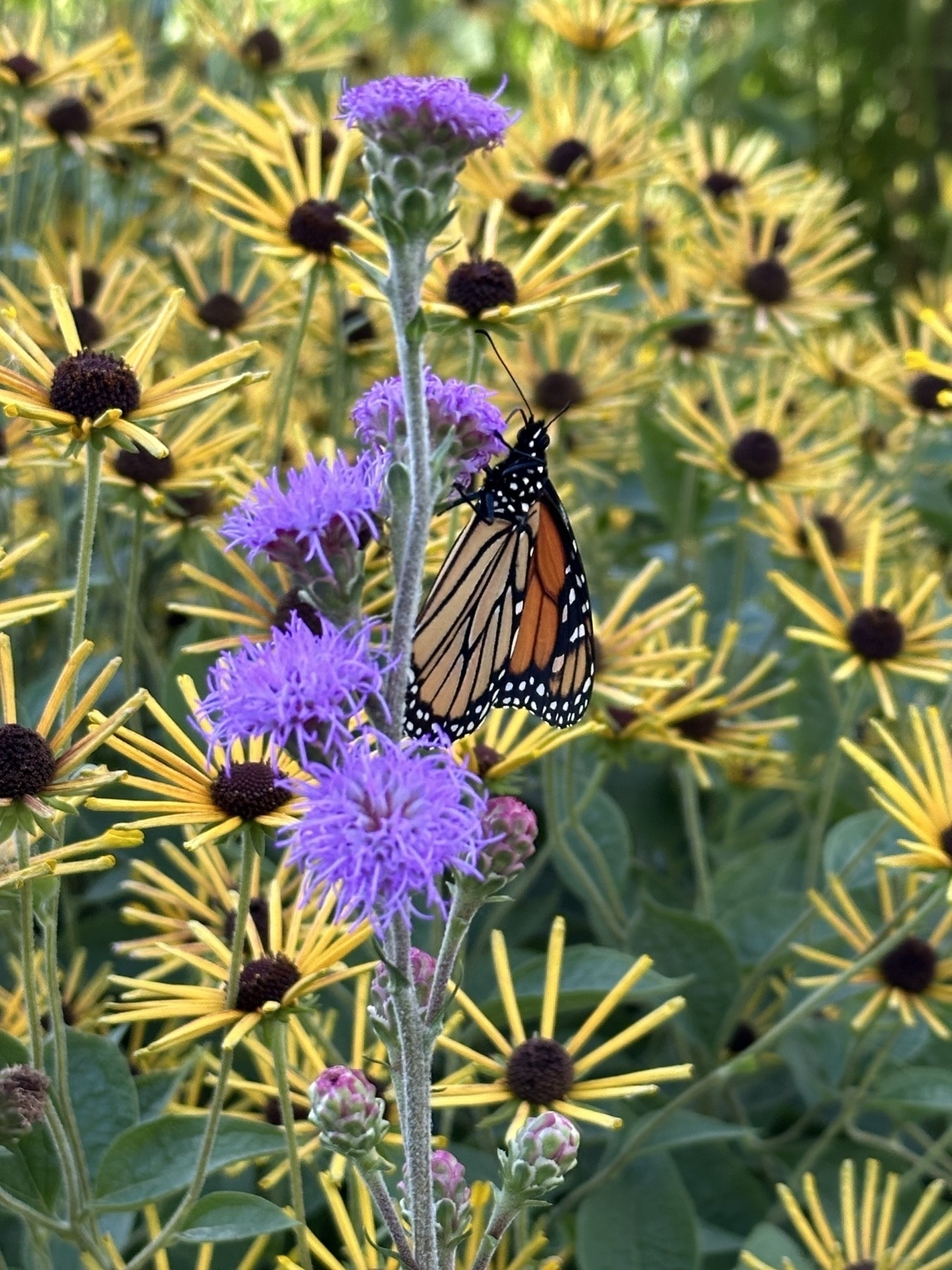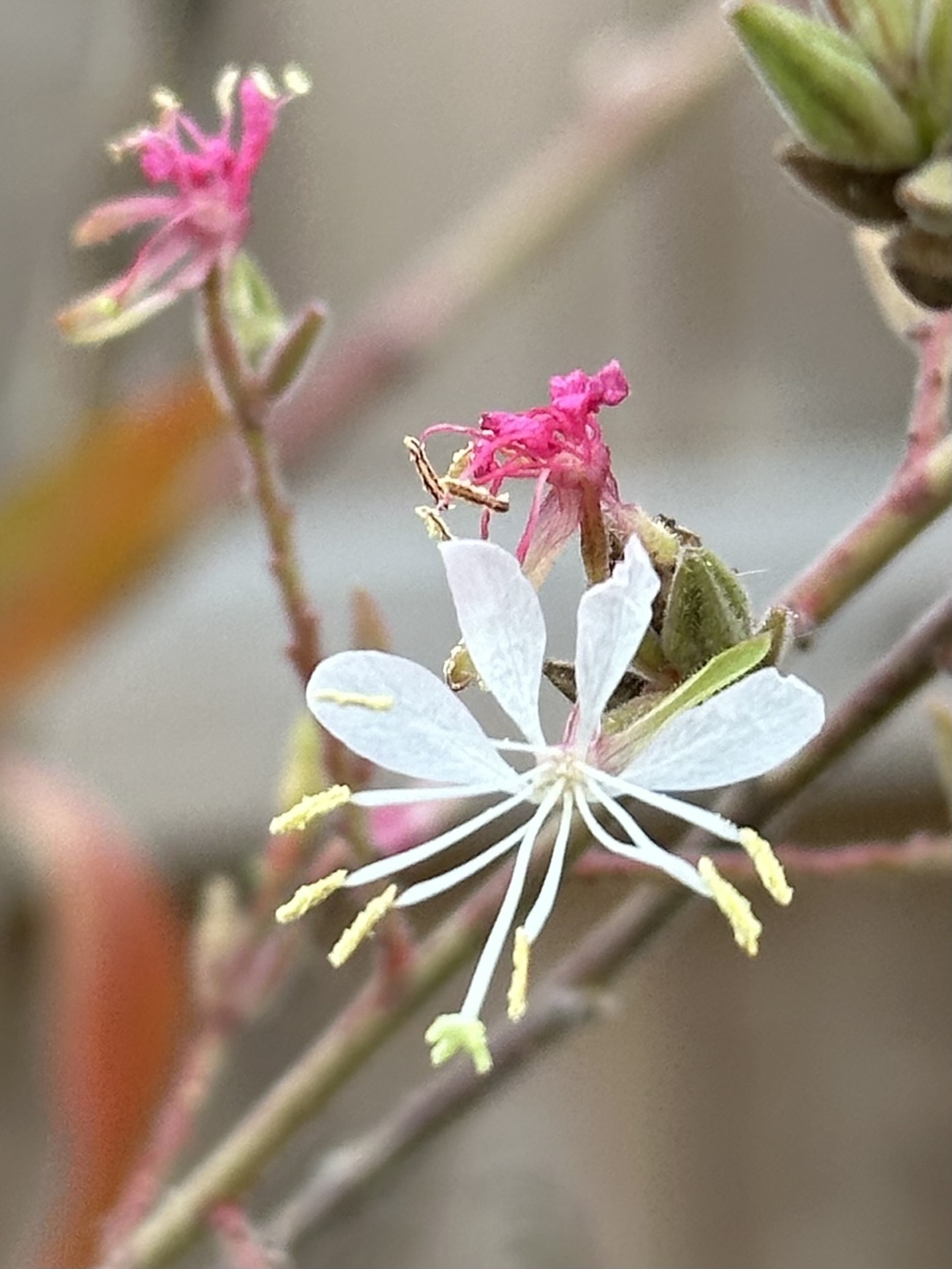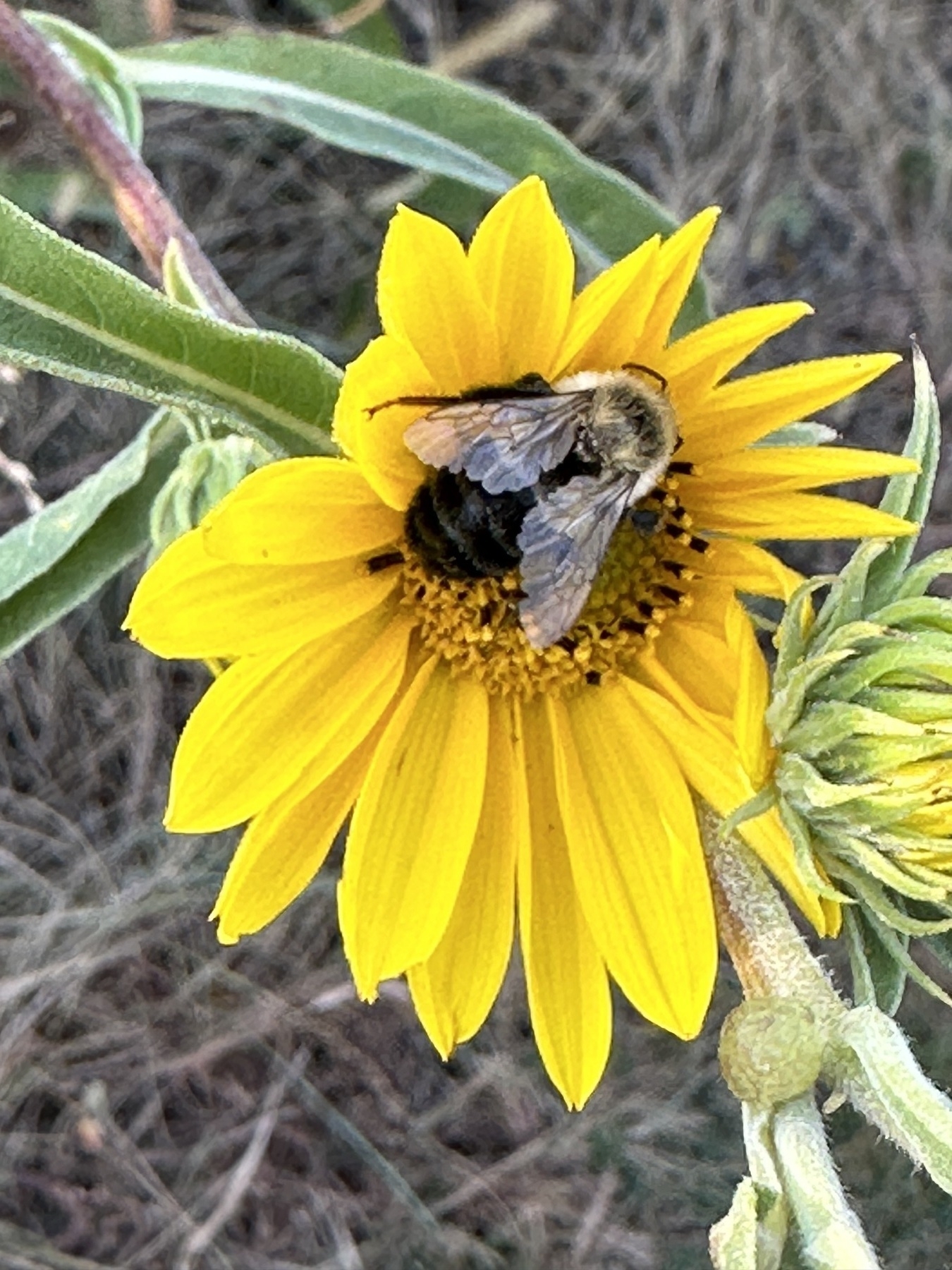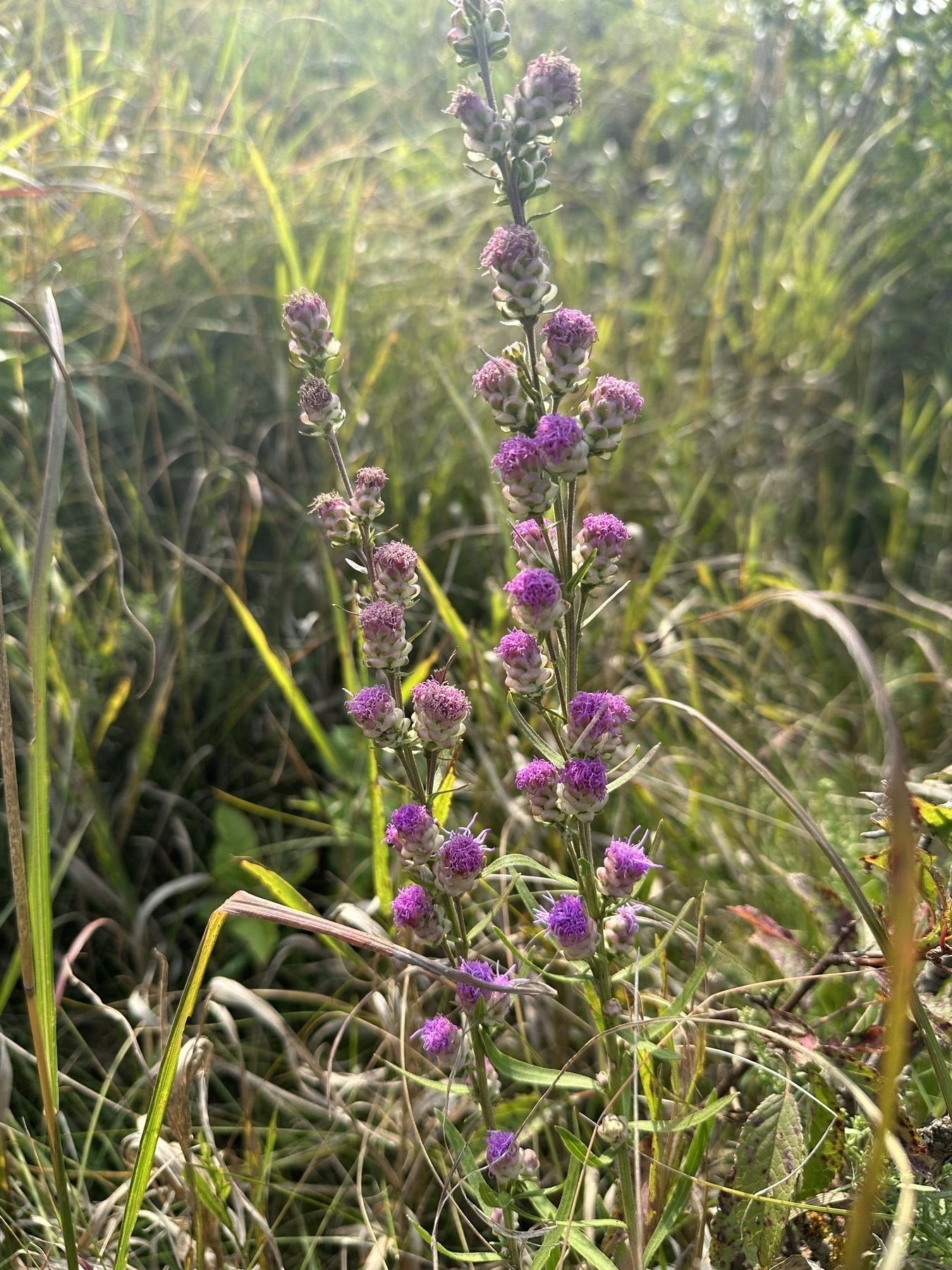How to grow a prairie garden in the city
Since a lot of people ask me how to grow native prairie plants or how to replace urban lawns with prairie grasses, here’s a quick summary of what I tell people.
Note: some of this is specific to the area around Sioux Falls, South Dakota, but I think most of it is relevant if you live in Iowa, Minnesota, Nebraska, or the Dakotas.
 (Photo: the prairie garden at McCrory Gardens at South Dakota State University)
(Photo: the prairie garden at McCrory Gardens at South Dakota State University)
A few years ago my student (now alum) Mia Werger developed both a prairie restoration garden and a DIY prairie kit for those who wanted to make their own prairies. That kit has since been produced by the Minnehaha Conservation District in Sioux Falls, and it’s worth checking in with them to see if they have any available. The Prairie and Pollinator Garden Program kit comes with seeds and directions for how to grow a small prairie, and a metal sign to help your neighbors know what you’re doing.
One big advantage of growing native plants is they’re already adapted to our weather, so you don’t need to waste water on them like we do with our lawns made of non-native grasses with shallow roots.
 (Photo: Biennial Bee Blossom, a native prairie plant)
(Photo: Biennial Bee Blossom, a native prairie plant)
A helpful guide to replacing a lawn with a prairie that your neighbors will envy can be found at Prairie Up and the Prairie Up book, all put together by Benjamin Vogt in Nebraska.
Prairie Moon Nursery sells local seeds and plants in Minnesota, and their website has a great interactive tool that will help you choose plants according to your growing conditions.
For those of us in western Iowa or eastern South Dakota, I also recommend checking out the online and local sales of Siouxland Prairie Farms. They harvest seeds very locally and grow plants specifically for our region. Plus, they’re really nice people. Here’s their Instagram for up-to-date sales information as well.
If you’re eager to learn more about prairie landscapes, and especially near where I live in South Dakota, check out Carter Johnson and Dennis Knight’s book The Ecology of Dakota Landscapes. It’s very readable, and beautiful, and it will help you understand the place where you’re trying to grow plants.
And if you’re curious about what my students and I have done on our campus, check out this map of our campus sustainability projects..
 (Photo: a native bumblebee on a perennial Maximilian sunflower. I took this photo in the garden Mia Werger started on our campus. You can read her published writing about that garden here.)
(Photo: a native bumblebee on a perennial Maximilian sunflower. I took this photo in the garden Mia Werger started on our campus. You can read her published writing about that garden here.)
A couple more notes to consider:
First, prairies don’t grow quickly. Most of the life of a healthy prairie is in the soil, not in the part of the plants that is above the soil. This means they can take a little while to get established. Be patient, and be willing to put in some time for weeding in the first 2-3 years. Eventually the plants will have built up enough root mass, and the soil will have built up enough life to support the plants and they’ll fend for themselves. Prairies are amazing.
Second, be prepared for your neighbors to dislike what you’re doing. It’s going to be a little unfamiliar to them, and it might run up against their notions of beautiful landscapes. Don’t be hard on them, but help them join you in the work of adapting to the place we live. We have adopted a lot of landscaping and architectural ideals from Europe and the eastern United States, and imposed them on the dry prairie. This is normal; we all tend to bring with us a lot of ideas we have inherited, and we don’t always ask whether those ideas need to be adapted to the new place we live. (Consider: we all tend to speak the same language our parents spoke, but we do also change a few words with each generation, and older folks have a hard time understanding the new words young people use to describe the conditions they live in! We can do the same thing with our ideas about landscapes and design, if we are thoughtful. Just be sure to teach the new “vocabulary” of your urban prairie to those who don’t know it yet. Signs can help with that. So can friendly conversations.)
Third, be mindful of covenants and local regulations. This is not always easy to figure out, but those ideas of beauty often get turned into local law or into covenants or agreements attached to property titles. This is often understood as a way of protecting property values by assuring a uniformity of “curb appeal.” Again, we don’t tend to think about where those ideas of beauty came from, or why we all want to live in something that looks like an English manor or a golf course. My city is growing and yet our water supply is not. By reducing the amount of non-native grass on my lawn, I am doing a favor to my city by making more water available for others. If we insist on spraying our purified drinking water on our lawns, we’re losing a precious resource and making our city less liveable. Native plants can be beautiful (see Vogt, above) and they can improve soil health, increase the number of butterflies and birds we see, and reduce our water use, saving us all money–and water.
I hope that helps!
 (Photo: this is one of the species of Liatris native to the prairie. I think I photographed this one in Brandon, South Dakota, at the state park there. All the photos on this post are mine, and all were taken within an hour’s drive of my home in Sioux Falls.)
(Photo: this is one of the species of Liatris native to the prairie. I think I photographed this one in Brandon, South Dakota, at the state park there. All the photos on this post are mine, and all were taken within an hour’s drive of my home in Sioux Falls.)